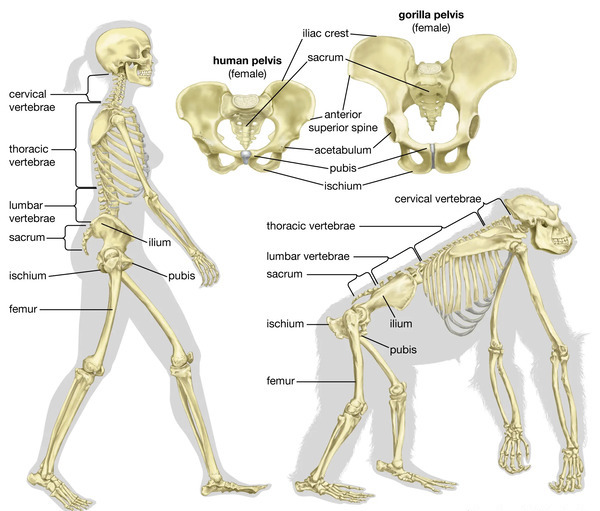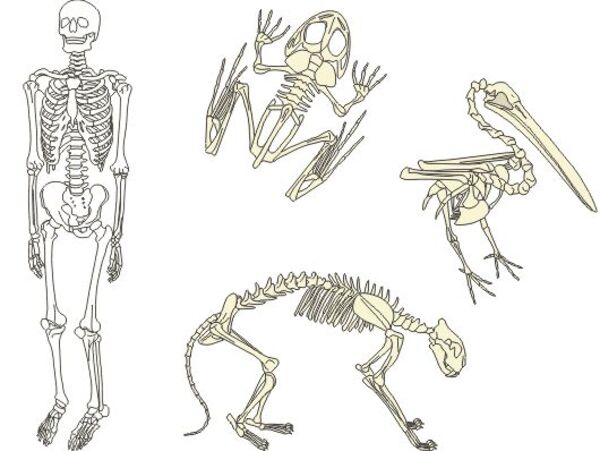Understanding the differences and similarities between human and animal skeletons is a key aspect of studying biology and anatomy. This article dives deep into the structure, function, and evolutionary adaptations of skeletons, helping you grasp how unique humans are while appreciating the diversity of the animal kingdom.
Introduction to Skeletal Systems
Key Differences Between Human and Animal Skeletons
Similarities in Human and Animal Skeletons
Evolutionary Adaptations in Skeletal Structures
Comparison of Specific Skeletal Parts
Skull Structure
Spine and Posture
Limbs and Movement
Table Comparison: Human vs Animal Skeleton
FAQs About Human and Animal Skeletons
Conclusion
The skeletal system is a framework of bones that provides support, protection, and structure to the body. While humans and animals both have skeletons, their designs vary significantly based on lifestyle, environment, and evolution.

Posture:
Humans are bipedal, meaning we walk upright on two legs, while most animals are quadrupedal, walking on four limbs.
Bone Density:
Human bones are dense and structured for endurance and support in an upright posture. Animals often have lighter bones to accommodate speed or agility.
Skull Shape:
Humans have larger skulls to house our complex brains. Animal skulls are typically more streamlined for specific functions like biting or grazing.
Despite their differences, humans and animals share many structural features:
Both have a backbone, classifying them as vertebrates.
Bones in both systems support movement and protect vital organs.
Many skeletal structures, like joints and ligaments, function similarly.
The evolution of skeletons is fascinating:
Humans: Adapted for upright walking, freeing hands for tool use and manipulation.
Animals: Adaptations range from wings in birds for flight to fins in fish for swimming.
Humans: Rounded skulls with prominent foreheads and jaws designed for speech and diverse diets.
Animals: Skulls vary widely; predators have sharp teeth and powerful jaws, while herbivores have flat teeth for grinding.
Humans: S-shaped spine for balance and upright posture.
Animals: Typically horizontal spines for stability in quadrupeds.
Humans: Long legs and shorter arms for efficient bipedal walking. Opposable thumbs for grasping.
Animals: Limbs adapted for their environment, like hooves for running or wings for flying.
| Feature | Human Skeleton | Animal Skeleton |
|---|---|---|
| Posture | Bipedal (upright walking) | Quadrupedal or specialized (e.g., flying) |
| Skull | Rounded, large brain cavity | Streamlined, varying shapes |
| Spine | S-shaped for upright balance | Horizontal for stability |
| Limb Structure | Long legs, short arms, opposable thumbs | Varies: wings, hooves, or fins |
| Bone Density | Dense for upright posture | Varies based on need for speed or agility |

Q: Why are human skeletons designed for upright walking?
A: Human skeletons evolved to support bipedal movement, allowing us to use our hands for tools and tasks.
Q: Do animals have bones similar to human hands?
A: Yes, primates and some mammals have similar bone structures, including opposable thumbs.
Q: How do animal skeletons adapt to their environments?
A: Animal skeletons evolve features like wings for flight, fins for swimming, or strong jaws for hunting.
Human and animal skeletons are both marvels of evolution, showcasing unique adaptations to different lifestyles. While humans are built for bipedal movement and complex tasks, animals boast incredible diversity tailored to survival in various habitats. Whether you're intrigued by science or nature, understanding these differences highlights the beauty of life's diversity.
This detailed guide explores every angle of human and animal skeletons, using an easy-to-read and engaging style. Perfect for curious minds, students, or anyone with an interest in anatomy and evolution!
animal tags: skeletons
We created this article in conjunction with AI technology, then made sure it was fact-checked and edited by a Animals Top editor.